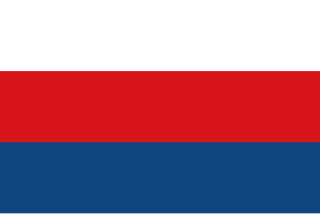
The Protectorate of Bohemia and Moravia was a partially annexed territory of Nazi Germany established on 16 March 1939 following the German occupation of the Czech lands on 15 March 1939. Earlier, following the Munich Agreement of September 1938, Nazi Germany had incorporated the Czech Sudetenland territory as a Reichsgau.

The Hitler cabinet was the government of Nazi Germany between 30 January 1933 and 30 April 1945 upon the appointment of Adolf Hitler as Chancellor of the German Reich by president Paul von Hindenburg. It was originally contrived by the national conservative politician Franz von Papen, who reserved the office of the Vice-Chancellor for himself. Originally, Hitler's first cabinet was called the Reich Cabinet of National Salvation, which was a coalition of the Nazi Party (NSDAP) and the national conservative German National People's Party (DNVP); it became an exclusively Nazi cabinet when the DNVP was intimidated into dissolving itself.

The Nuremberg Laws were antisemitic and racist laws that were enacted in Nazi Germany on 15 September 1935, at a special meeting of the Reichstag convened during the annual Nuremberg Rally of the Nazi Party. The two laws were the Law for the Protection of German Blood and German Honour, which forbade marriages and extramarital intercourse between Jews and Germans and the employment of German females under 45 in Jewish households, and the Reich Citizenship Law, which declared that only those of German or related blood were eligible to be Reich citizens. The remainder were classed as state subjects without any citizenship rights. A supplementary decree outlining the definition of who was Jewish was passed on 14 November, and the Reich Citizenship Law officially came into force on that date. The laws were expanded on 26 November 1935 to include Romani and Black people. This supplementary decree defined Romanis as "enemies of the race-based state", the same category as Jews.
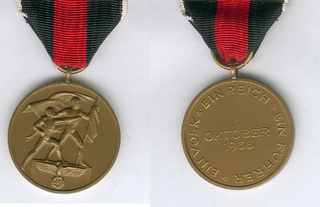
The 1 October 1938 Commemorative Medal, commonly known as the Sudetenland Medal was a decoration of Nazi Germany awarded during the interwar period, and the second in a series of Occupation Medals.
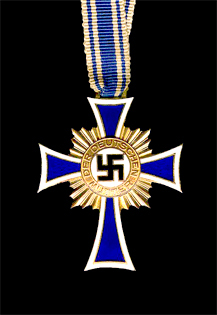
The Cross of Honour of the German Mother, referred to colloquially as the Mutterehrenkreuz or simply Mutterkreuz, was a state decoration conferred by the government of the German Reich to honour a Reichsdeutsche German mother for exceptional merit to the German nation. Eligibility later extended to include Volksdeutsche mothers from, for example, Austria and Sudetenland, that had earlier been incorporated into the German Reich.

The Plutellidae are a family of moths commonly known as the diamondback moths, named after the diamondback moth of European origin. Some authors consider this family to be a subfamily of the Yponomeutidae, but it is usually considered to be a family in its own right, and have three subfamilies, Plutellinae, Praydinae, and Scythropiinae.

The Phaegopterina are a subtribe of tiger moths in the tribe Arctiini, which is part of the family Erebidae. The subtribe was described by William Forsell Kirby in 1892.
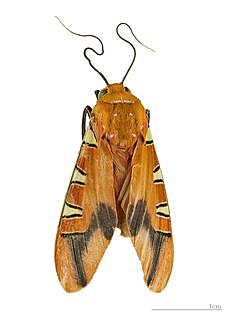
Gorgonidia is a genus of moths in the family Erebidae. The genus was erected by Harrison Gray Dyar Jr. in 1898.

The Anschluss, also known as the Anschluss Österreichs, refers to the annexation of Austria into Nazi Germany on 12 March 1938.

The National Socialist League of the Reich for Physical Exercise, was the umbrella organization for sports and physical education in Nazi Germany. The NSRL was known as the German League of the Reich for Physical Exercise until 1938. The organization was expanded to Austria after that country's annexation by Nazi Germany.
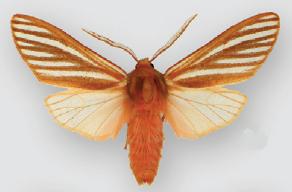
Pseudohemihyalea is a genus of moths in the family Erebidae described by Régo Barros in 1956. While the caterpillars of most species of Pseudohemihyalea feed on broad-leaved trees, the P. ambigua group has larvae that feed on conifers. Their forewing coloration has accordingly evolved to light-and-dark lengthwise striping, giving better camouflage among the slim needles of the host plants. In this, they seem to be convergent to certain geometer moths, such as Caripeta piniata or Sabulodes niveostriata.
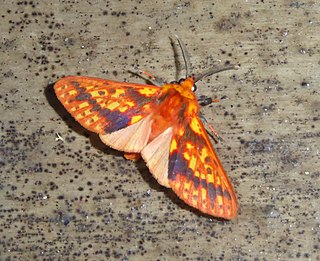
Symphlebia is a genus of moths in the family Erebidae. The genus was erected by Felder in 1874.

Asota is a genus of moths in the family Erebidae first described by Jacob Hübner in 1819. Species are widely distributed throughout Africa, India, Sri Lanka, Myanmar, the Malayan region and tropical parts of the Australian region.
Asota circularis is a moth of the family Erebidae first described by Reich in 1938. It is found in Papua New Guinea.

Xyloryctidae is a family of moths contained within the superfamily Gelechioidea described by Edward Meyrick in 1890. Most genera are found in the Indo-Australian region. While many of these moths are tiny, some members of the family grow to a wingspan of up to 66 mm, making them giants among the micromoths.
Gorgonidia buckleyi is a moth of the family Erebidae first described by Herbert Druce in 1898. It is found in Napo Province, Ecuador.
Gorgonidia vulcania is a moth of the family Erebidae first described by Hervé de Toulgoët in 1987. It is found in French Guiana and Suriname.
Gorgonidia helenae is a moth of the family Erebidae. It is found in Guatemala.
Pseudischnocampa nigridorsata is a moth in the family Erebidae. It was described by William Schaus in 1901. It is found in Peru, Argentina and Ecuador.
Pseudohemihyalea asignata is a moth in the family Erebidae. It was described by Reich in 1938. It is found in Costa Rica.













